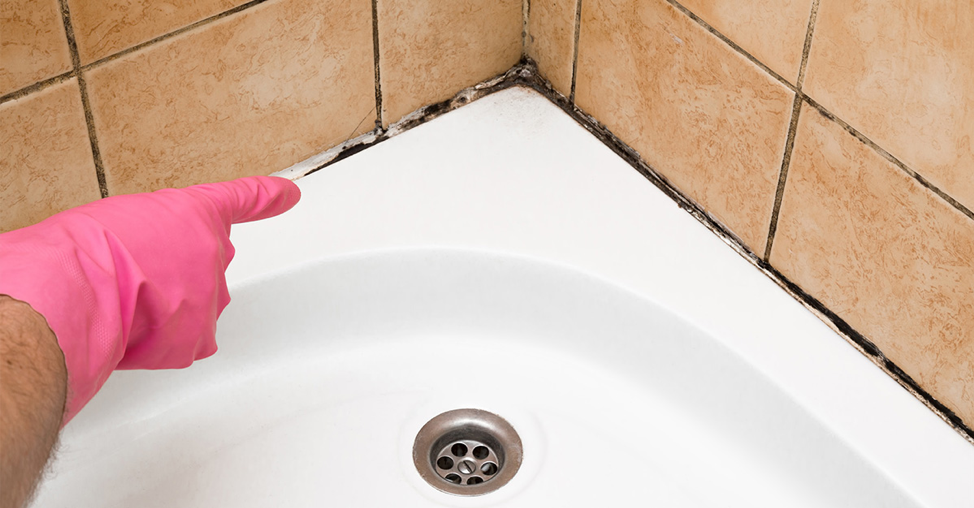Read Our Reviews!

Whether it’s in the bathroom, kitchen, basement or walls, mold is an unwelcome visitor and potential harbinger of hygiene and health issues; it’s a persistent problem that can frustrate even the most diligent cleaning efforts. Any wet areas are particularly susceptible, but ignoring this freeloading fungus too long can turn it from an eyesore to a health hazard that can exacerbate or even cause certain medical conditions. Here are important things to know about this household menace.
1. What is Mold?
At a basic level, mold is a fungus that plays an important role in the ecosystem as a decomposer of organic matter — like nature’s own recycling system. Neither plant nor animal, these fungi can grow in large groups to form the mold we see thriving in areas with high moisture levels, including kitchens, bathrooms and basements. However, the fuzzy, black spots you find in your grout and shower curtains are not actually the mold itself; it’s the waste products that are extruded (yuck!).
2. How Does Mold Grow and Spread?
Mold spores are released into the air and can attach to susceptible surfaces. The best environment for it to grow are areas with warm temperatures and high relative humidity. Mold prefers dark areas. It doesn’t need photosynthesis. Light can make an area too dry to grow in.
Because of those facts, the bathroom you use for warm showers and the kitchen with cramped spaces behind heavy water-using appliances can make for the perfect mold incubator. Even the back side of a wall or tile has enough space for a spore to grow and thrive.
3. What Are Some Risks of Mold Exposure?
Mold may be a part of the ecosystem, but there are no natural checks on it when it’s growing in your patio or shower. The fungus and the damp areas that it thrives in can reduce air quality and lead to health problems for you and your loved ones. Exposure can lead to respiratory symptoms such as sneezing and coughing, especially for those who are allergic or suffer from asthma. Children and the elderly can be particularly vulnerable, as well as those who are immunocompromised and anyone with diminished lung function. For this reason, it’s extremely important to keep your environment mold-free.
If you have seen an increase in allergies, colds, sinus infections, stuffiness, sneezing, or even snoring you may well be experiencing a reaction to a change in your interior air quality.
4. How Do You Remove Mold Stains?
The first thing you need to do is disrupt the growing habitat by checking for any potential water leaks, standing water or airflow problems. Otherwise, the root cause of the problem will remain. Practice preventative tactics by wiping up spills and standing water immediately as well as drying out damp environments with an exhaust fan or dehumidifier.
The next step is eliminating the mold. Eliminating mold means getting rid of the organisms along with the black spots they create. MARBLELIFE® Mold & Mildew Stain Remover is highly effective at removing mold stains from marble, travertine, slate and other stone and grout. It safely penetrates stone surfaces where mold stains originate, gently loosens their hold, and allows them to be rinsed away. If available, ultraviolet light can also assist with stopping or slowing fungi growth.
Mold behind walls is often the result of cracks in the grout or tile, and replacing damaged pieces can help reduce growth. Caulking or tile replacement can also help resolve the issue, but be aware that partial fixes will allow the problem to return. In addition, regular resealing using a product like MARBLELIFE® Stone Sealer and MARBLELIFE® Grout Sealer can repel water and oil from seeping into and through the material.
5. When Should You Seek Help?
You may be able to deal with small or initial problems involving tile or grout on your own, but mold on wood, carpeting, drywall and insulation often requires a professional’s expertise. It can be difficult for homeowners to completely treat the nooks and crannies of such surfaces, along with the situations that can originate on the backside of a surface, especially more porous ones.
For your mold questions and concerns, contact your local MARBLELIFE® office. An experienced technician will be happy to assist you. Each situation is different and requires evaluating the integrity of the hard surface, the airflow within a space, and many other factors before making a corrective recommendation.
Removing mold stains is necessary to restore a cleanable surface, but in order to eradicate the problem, changes in airflow, drying ability and moisture sources will be needed. MARBLELIFE® can get you back to clean and provide guidance on how to best mitigate the mold’s return. Call for a FREE Assessment.
Source: https://www.webmd.com/women/mold-mildew#1
Call MARBLELIFE at (888) 524-3372 or visit us online to secure your FREE ESTIMATE at www.MARBLELIFE.com or to www.MARBLELIFEPRODUCTS.com to secure the care products appropriate to your surface, and your desire for an easy effective cleaning solution.